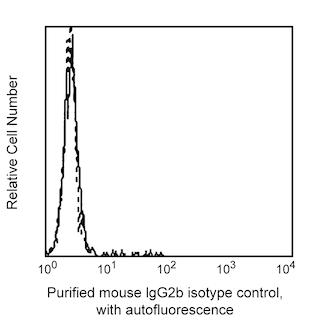-
抗体試薬
- フローサイトメトリー用試薬
-
ウェスタンブロッティング抗体試薬
- イムノアッセイ試薬
-
シングルセル試薬
- BD® AbSeq Assay
- BD Rhapsody™ Accessory Kits
- BD® OMICS-One Immune Profiler Protein Panel
- BD® Single-Cell Multiplexing Kit
- BD Rhapsody™ TCR/BCR Next Multiomic Assays
- BD Rhapsody™ Targeted mRNA Kits
- BD Rhapsody™ Whole Transcriptome Analysis (WTA) Amplification Kit
- BD® OMICS-Guard Sample Preservation Buffer
- BD Rhapsody™ ATAC-Seq Assays
- BD® OMICS-One Protein Panels
-
細胞機能評価のための試薬
-
顕微鏡・イメージング用試薬
-
細胞調製・分離試薬
-
- BD® AbSeq Assay
- BD Rhapsody™ Accessory Kits
- BD® OMICS-One Immune Profiler Protein Panel
- BD® Single-Cell Multiplexing Kit
- BD Rhapsody™ TCR/BCR Next Multiomic Assays
- BD Rhapsody™ Targeted mRNA Kits
- BD Rhapsody™ Whole Transcriptome Analysis (WTA) Amplification Kit
- BD® OMICS-Guard Sample Preservation Buffer
- BD Rhapsody™ ATAC-Seq Assays
- BD® OMICS-One Protein Panels
- Japan (Japanese)
-
Change country/language
Old Browser
Looks like you're visiting us from United States.
Would you like to stay on the current country site or be switched to your country?
BD Pharmingen™ Purified Mouse Anti-Human P-glycoprotein (CD243)
クローン 17F9 (RUO)

Flow cytometric profile of CD243 expression on PMG-Y cell line. PMG-Y cells were internally transfected and developed to express CD243. They were first stained with either Purified Mouse IgG2b, ĸ Isotype Control (Cat. No. 555740; dashed line histogram) or Purified Mouse Anti-Human P-glycoprotein (CD243) (Cat. No. 557001; solid line histogram), then FITC Goat Anti-Mouse IgG/IgM (Cat. No. 555988). Fluorescent histograms were derived from gated events with the forward and side light-scattering characteristics of viable cells. Flow cytometric analysis was performed on a BD FACScan™.


Flow cytometric profile of CD243 expression on PMG-Y cell line. PMG-Y cells were internally transfected and developed to express CD243. They were first stained with either Purified Mouse IgG2b, ĸ Isotype Control (Cat. No. 555740; dashed line histogram) or Purified Mouse Anti-Human P-glycoprotein (CD243) (Cat. No. 557001; solid line histogram), then FITC Goat Anti-Mouse IgG/IgM (Cat. No. 555988). Fluorescent histograms were derived from gated events with the forward and side light-scattering characteristics of viable cells. Flow cytometric analysis was performed on a BD FACScan™.

Flow cytometric profile of CD243 expression on PMG-Y cell line. PMG-Y cells were internally transfected and developed to express CD243. They were first stained with either Purified Mouse IgG2b, ĸ Isotype Control (Cat. No. 555740; dashed line histogram) or Purified Mouse Anti-Human P-glycoprotein (CD243) (Cat. No. 557001; solid line histogram), then FITC Goat Anti-Mouse IgG/IgM (Cat. No. 555988). Fluorescent histograms were derived from gated events with the forward and side light-scattering characteristics of viable cells. Flow cytometric analysis was performed on a BD FACScan™.


BD Pharmingen™ Purified Mouse Anti-Human P-glycoprotein (CD243)

Regulatory Statusの凡例
Any use of products other than the permitted use without the express written authorization of Becton, Dickinson and Company is strictly prohibited.
Preparation and Storage
Product Notices
- Since applications vary, each investigator should titrate the reagent to obtain optimal results.
- Caution: Sodium azide yields highly toxic hydrazoic acid under acidic conditions. Dilute azide compounds in running water before discarding to avoid accumulation of potentially explosive deposits in plumbing.
- An isotype control should be used at the same concentration as the antibody of interest.
- Sodium azide is a reversible inhibitor of oxidative metabolism; therefore, antibody preparations containing this preservative agent must not be used in cell cultures nor injected into animals. Sodium azide may be removed by washing stained cells or plate-bound antibody or dialyzing soluble antibody in sodium azide-free buffer. Since endotoxin may also affect the results of functional studies, we recommend the NA/LE (No Azide/Low Endotoxin) antibody format, if available, for in vitro and in vivo use.
- Please refer to www.bdbiosciences.com/us/s/resources for technical protocols.
関連製品

.png?imwidth=320)

The 17F9 monoclonal antibody specifically binds to the 170-180 kDa transmembrane glycoprotein (P-glycoprotein), a product of the multidrug resistance-1 (MDR1) gene. This glycoprotein is expressed on MDR positive cells and has been reported to be expressed on many normal tissues, such as adrenal glands and endothelium, in the brain and skin. P-glycoprotein is known to impart drug resistance to cells by pumping many anti-cancer drugs out of the cytoplasm. 17F9 antibody is able to partially block the binding of UIC2 antibody (another MDR-specific monoclonal antibody).
Development References (3)
-
Benard J, Bourhis J, Riou G. Clinical significance of multiple drug resistance in human cancers. Anticancer Res. 1990; 10(5A):1297-1302. (Biology). View Reference
-
Goldstein LJ, Galski H, Fojo A, et al. Expression of a multidrug resistance gene in human cancers. J Natl Cancer Inst. 1989; 81(2):116-124. (Biology). View Reference
-
Shi T, Wrin J, Reeder J, Liu D, Ring DB. High-affinity monoclonal antibodies against P-glycoprotein. Clin Immunol Immunopathol. 1995; 76(1):44-51. (Biology). View Reference
Please refer to Support Documents for Quality Certificates
Global - Refer to manufacturer's instructions for use and related User Manuals and Technical data sheets before using this products as described
Comparisons, where applicable, are made against older BD Technology, manual methods or are general performance claims. Comparisons are not made against non-BD technologies, unless otherwise noted.
For Research Use Only. Not for use in diagnostic or therapeutic procedures.